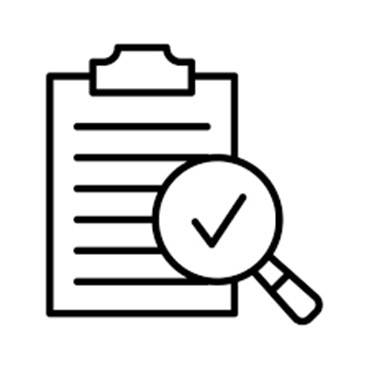Academic Program Review
Academic Program Review at Kennesaw State University
Rationale
-
What is Comprehensive Academic Program Review at Kennesaw State University?
Academic Program Review seeks to evaluate the performance of curricula, departments, faculty, and/or students at a degree granting institution of higher education (Hanover Research, 2012). At Kennesaw State University, we believe the APR process enables the faculty, programs, departments, colleges, and the institution to evaluate and reflect on the programs within the academic portfolio by engaging in the following activities.
- Examine the effectiveness of academic programs by examining the quality, viability, and productivity of efforts in teaching and learning, scholarship, and service as appropriate to the institution’s mission.
- Collect and review quantitative and qualitative data holistically to inform conclusions about the program.
- Evaluate the quality and relevance of courses and programs as well as the qualifications and sufficiency of full-time faculty and resources.
- Identify areas for continuous improvement based on a culture of evidence.
- Support the justifications for needed program and college level resources
-
What is the purpose of APR at Kennesaw State University?
The purpose of APR is NOT to evaluate programs against each other or rank them as good or bad across the institution. The purpose is support the review of the program against its own goals or outcomes to identify areas in which the program will engage in continuous improvement strategies with the next several years.
-
Why do we assess student learning?
The aim of the assessment process is to enhance comprehension of student learning within courses and programs. Our assessments should yield valuable insights into student learning, serving as a compass for future enhancements to the program. Given the dynamic nature of disciplines, pedagogy, and student demographics, it may be necessary to refine the assessment framework and procedures to effectively address these shifts, ensuring the continued relevance and utility of the process. The structured evaluation of outcomes that delineate success holds substantial importance in fostering student success.
-
Which programs use the Academic Program Review process?
Programs that do not hold external programmatic accreditation engage in the full Academic Program Review (APR) on a seven-year cycle.
Programs holding external programmatic accreditation may utilize evidence from the accreditation process for Kennesaw State University's academic program reviews, which occur within a maximum cycle of ten (10) years.
-
Academic Programs Without Specialized Accreditation.
If your program is preparing to engage in the APR process, please contact Dr. Leigh Funk at lfunk@kennesaw.edu to gain access to the Academic Program Review D2L shell which contains the APR Orientation as well as all of the documents and resources needed to complete this process.
-
Academic Programs with Specialized Accreditation
Accredited programs undergo a rigorous review of their programs and according to the USG, accreditation review documents can be used as part of the Academic Program Review Process. However, according to the USG Academic & Student Affairs Handbook Policy 2.3.6 – Comprehensive Program Review, “Programs accredited by external entities may not substitute an external review for institutional program review, but material submitted as part of an external accreditation process may be used in the institutional review.” To incorporate the accreditation review into the APR process, KSU is using a Mini-APR process which will occur the spring semester after the accreditation review
Steps in the Process

Frequently Asked Questions
-
What are the levels of review?
The levels of review offer opportunities for discussion about program strengths and accomplishments, as well as needs within and across a department, college, and ultimately, across the institution. Feedback and commitments are captured and discussed at each level with the final recommendations and resource commitments being shared with the program faculty. The final recommendations and commitments are ultimately converted into a multi-year action plan to ensure the strategies and commitments are completed in accordance with what has been decided.
-
What should programs consider as they begin the APR process?
Communication
What are the communication expectations between the faculty, program coordinator (report writers), department chairs, and dean's office during the development of the report?
Common Questions to Target College Priorities
Identify a set of expectations to share with with program faculty and department chair as you seek to bring consistency or focus to particular initiatives, strategies, or priorities.
Leveraging Other KSU Resources
What other KSU resources would the college or department like to invite to participate during the development of the report? Colleges/departments are welcome to consult with any other units on campus as you prepare the report. As part of the process, the Office of Institutional Research and other data informed units prepare the program Data Packets so the program will not need to generate their own data.
-
What is the self study?
The self study is the heart of this review process and uses a template that is designed to walk programs through the process of reviewing and analyzing a variety of key data points about the program as well as reflecting on other key indicators specifically related to the the requirements of USG policy 2.3.6.
-
What are program data packets?
Each program will receive four APR data packets from Institutional Research (IR), the Library (LIB), Curriculum (CURR), and Assessment of Learning Reports (AOL). Each packet has a table of contents that provides easy guidance to the information contained therein. The packets are designed to provide 3-5 year trend data for analysis whenever possible on key metrics identified by the institution that all academic programs are evaluated.
-
What is the APR timeline and phases?
The year-long APR process consists of the following major phases:
Late summer/fall
- External reviewer selection
- Self-study development
Spring/early summer
- External review by discipline experts
- Collaborative establishment of action steps
- Multi-level Review Meetings (Dean, Academic Affairs)
-
What are external reviewers?
External reviewers play an essential role in the academic review process and are intended to provide expert feedback on key aspects of your program that can be used for considerations to improve the program. As a result, the program should identify 2-3 external reviewers to evaluate their program. The literature suggests it is best practice to utilize multiple reviewers because it stimulates important conversations as the reviewers collaborate to compile the findings for the final report. These reviewers should be from peer or aspirational programs.
-
What is the external visit?
The visit gives the external reviewers an opportunity to meet with faculty, administrators, students and others to further explore your program. After they have examined the self study report, the external virtual visit serves as both a verification of information provided in the written report.
-
What is the executive summary?
The key task in this phase is to synthesize the findings of the self-study and the recommendations of the reviewers into an accessible executive summary for review by the dean and then by the provost.
-
Where can I find more information about the APR process?
Located in D2L, the Orientation Academic Program Review (APR) Orientation provides information about KSU's APR process in an effort to maximize the use of everyone's time throughout this year-long process. All resources can be found by visiting this site https://d2l.kennesaw.edu/.















